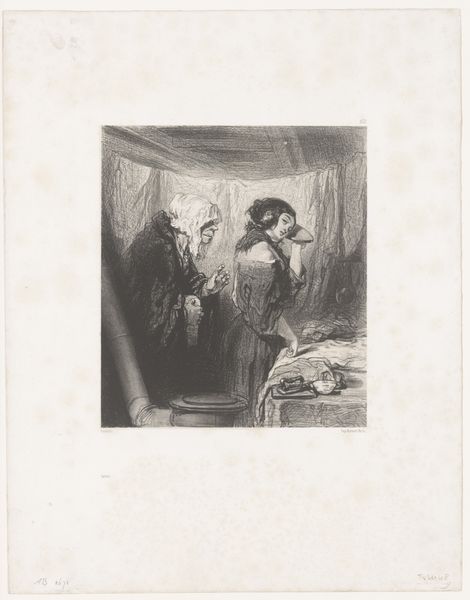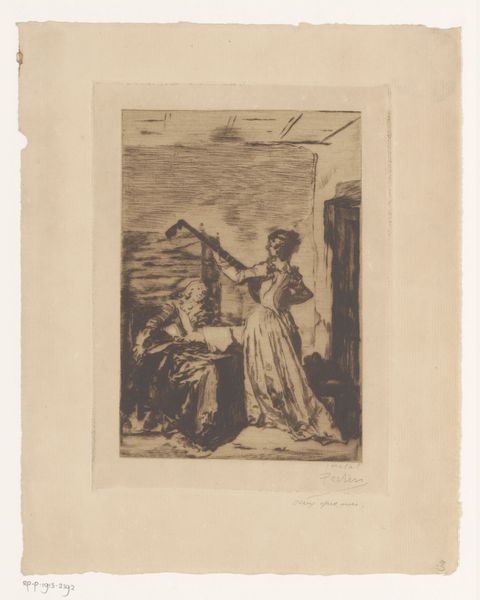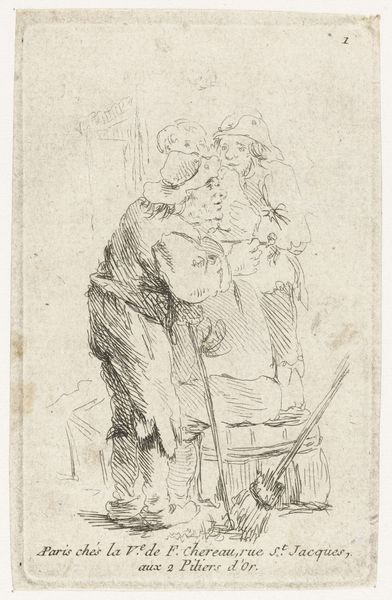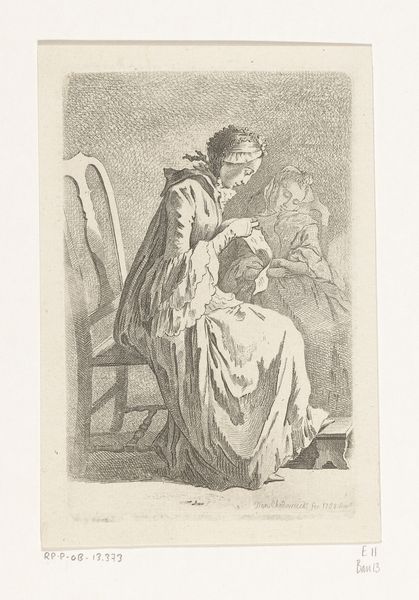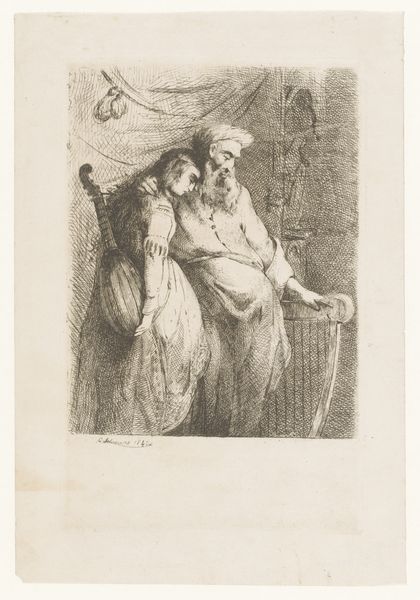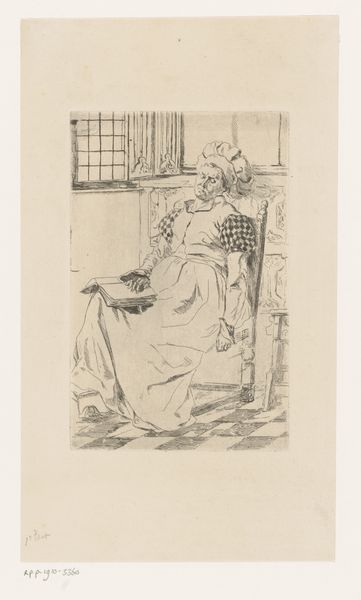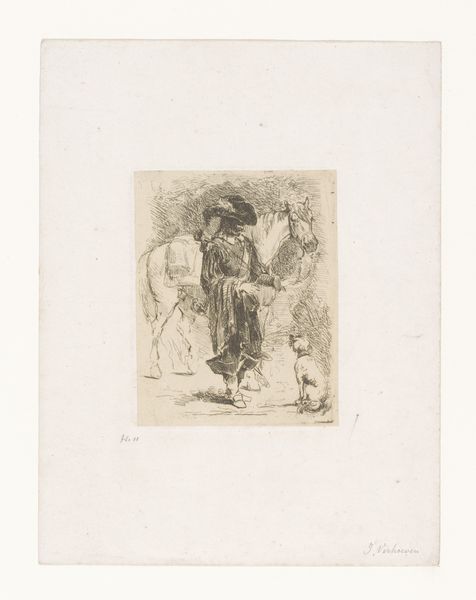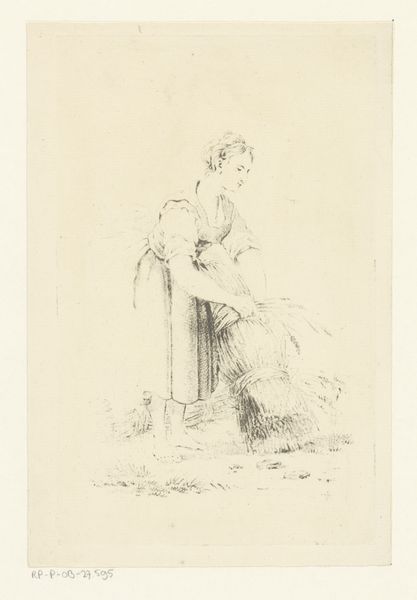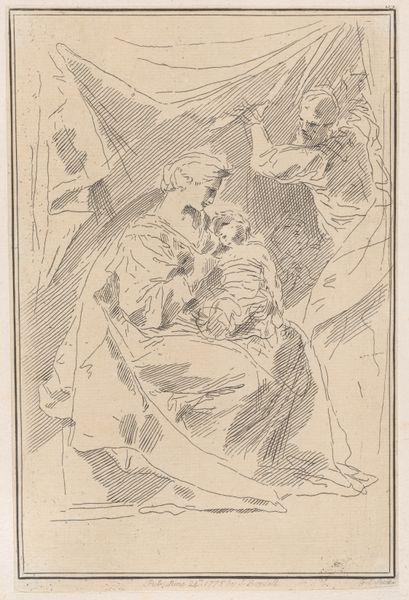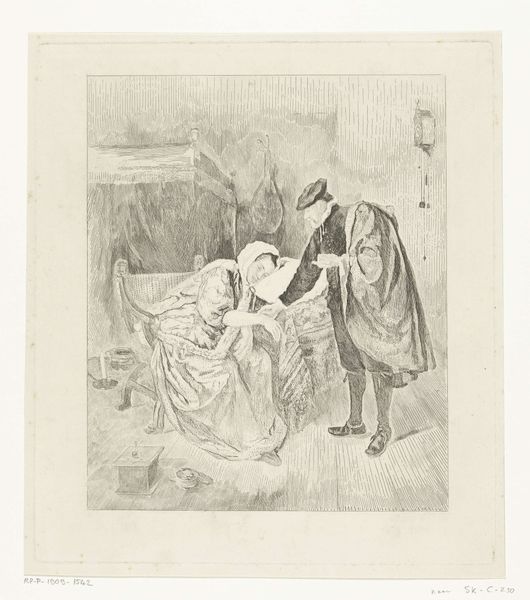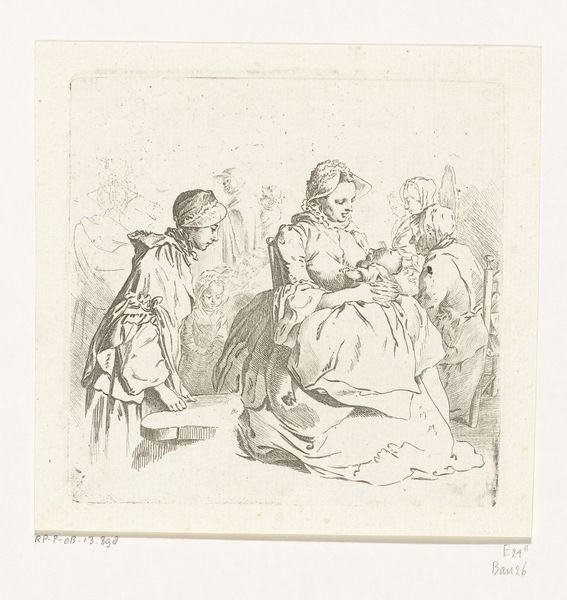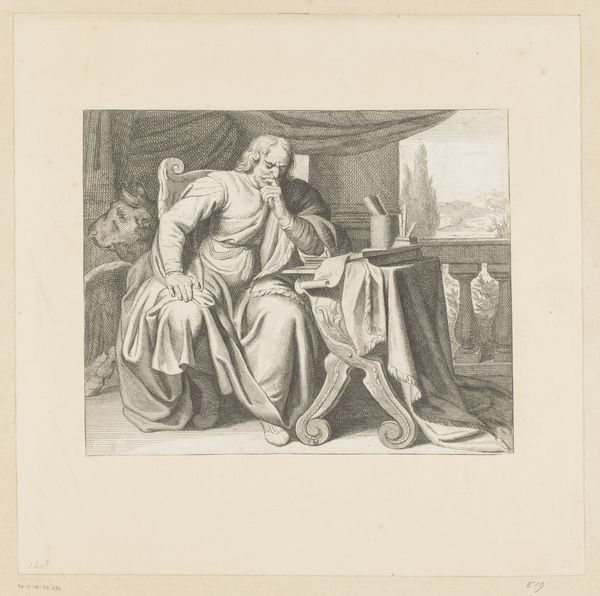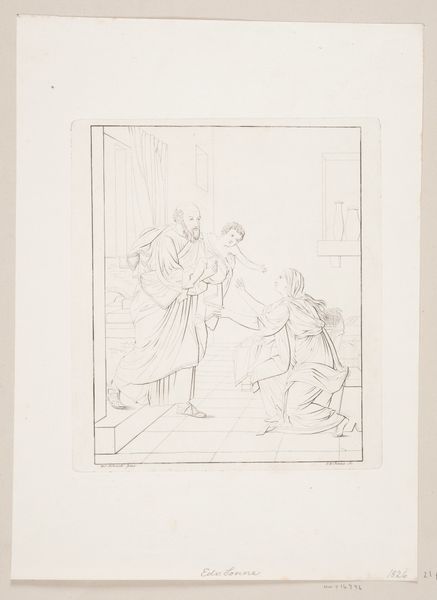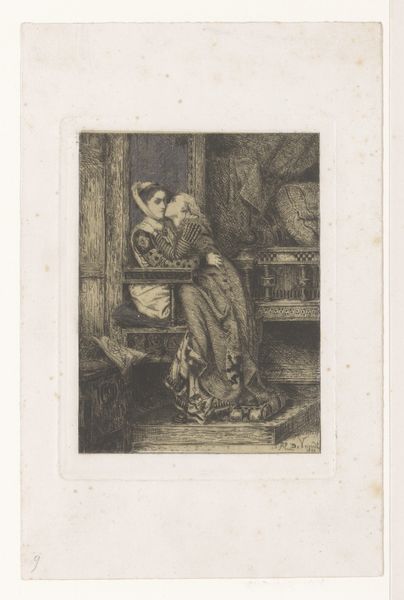
Tankefuldt siddende ung mand med hånden under kind. Kappe og pelshue 1668 - 1671
0:00
0:00
drawing, charcoal
#
portrait
#
drawing
#
negative space
#
baroque
#
dutch-golden-age
#
charcoal drawing
#
figuration
#
charcoal art
#
charcoal
#
remaining negative space
Dimensions: 417 mm (height) x 265 mm (width) (bladmaal)
Curator: Welcome. Here we have a drawing, "Tankefuldt siddende ung mand med hånden under kind. Kappe og pelshue," created between 1668 and 1671 by Karel van Mander III. It's rendered in charcoal. Editor: The overall impression I get is one of weariness, almost defeat. The slumped posture, the hand supporting his head… the textures, that dark charcoal... It conveys a sense of deep pensiveness, maybe even despair. Curator: Van Mander, part of a significant family of artists, was working within the Dutch Golden Age. This drawing reflects the Baroque period, but it’s also deeply personal. What’s fascinating is considering this piece within the context of portraiture. This wasn't necessarily intended as a commissioned piece, but maybe something much more spontaneous, informal... Editor: You know, his attire suggests a certain status—the fur-trimmed hat, the cape—but it does little to counter the overwhelming feeling of dejection. One wonders what kind of societal pressures this young man was dealing with to be captured in such a posture. Was this common? Curator: Well, Dutch Golden Age portraiture was often tied to ideas of wealth and civic virtue. While he looks downcast, you could view his "brooding intellectual" state, which became almost a codified trope of masculine thoughtfulness, and became tied to status in itself. But charcoal drawings like these weren't for public display—they give us glimpses into the private spheres. They lack the sort of polished, performative publicness of traditional portraits. Editor: Right, it's like peeling back the layers of representation that would've typically surrounded such an individual. Instead, we're presented with vulnerability, maybe even a silent form of protest. How does that resonate with notions of gender and power at that time? Did societal expectations for men play a role here? Curator: Absolutely, his quiet contemplation could be a challenge to the expectations that noble men should act like men. Was it intended to explore ideas about emotional complexity, something not often outwardly displayed? It's quite humanizing, isn’t it? Editor: It really is. Thank you. The charcoal and the informal posture grant us this powerful access. It's the tension between that hint of social status and profound personal emotion that truly gets you. Curator: A private view into an internal landscape. An opportunity for us to find moments of intersectionality with what it meant to be someone, even now, who had status to uphold, expectations to maintain.
Comments
No comments
Be the first to comment and join the conversation on the ultimate creative platform.
